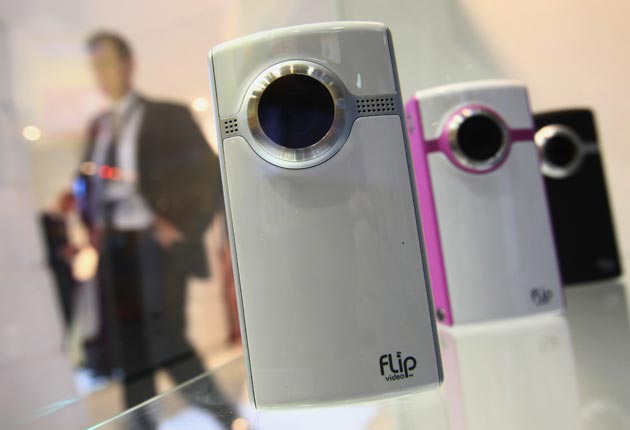The swift rise and fall of the Flip camcorder

Even by the standards of today's fast-paced technological change, the life story of the Flip camcorder happened at breakneck speed.
It was launched in 2007 by Pure Digital, a small US outfit which had been experimenting with disposable digital cameras, and quickly became the coolest video recording device on the market, leaving the likes of Sony and Kodak playing catch-up and phone manufacturers cramming similar functionality into their devices.
Two years later, the company was bought by US computing giant Cisco for $590m, and those who had doubted Flip at the outset were forced to concede that they had been wrong. But this week, Cisco announced the Flip's demise in a press release full of corporate-speak. "We are making key, targeted moves as we align operations in support of our network-centric platform strategy," it read. What it means is that the Flip, a camcorder which accounts for 35 per cent of the US market and is still the top seller on Amazon, is being mothballed. Commentators were flabbergasted.
On the face of it, the blame could be laid neatly at the door of the smartphone. Convergence, the process by which gadgets pack in more features as technology progresses, has already caused mobile phones to cannibalise sales of alarm clocks, satnavs, MP3 players, point-and-shoot cameras, digital watches and, arguably, games consoles.
As phones developed cutting-edge video capabilities (most notably the HD-quality efforts of the iPhone 4) it left technology consumers asking a pertinent question: Why take two phone-shaped objects out of the house, when one of them does the job perfectly well? In reality, footage captured by the Flip was better than any phone, and it was substantially cheaper. But in the longer term it was always destined to struggle against a gadget that people carry around as a matter of course. In 2009, when they triumphantly sold up for a tidy sum, Pure Digital's founders would have seen that coming. But why didn't Cisco?
Cisco's core business has always been to provide high-end networking products to businesses – a strategy which helped it become the most valuable company in the world at the height of the dotcom boom back in March 2000.
But in the last decade it has frequently been seduced by the notion of producing cool consumer products and never quite pulled it off. It seemed to lack the inspiration to battle with the smartphone revolution in the way that, say, satnav manufacturer Garmin attempted to when it produced its own branded phone.
The death of the Flip is perhaps a testament to this. Two weeks ago Cisco's CEO, John Chambers, issued a statement apologising to investors and employees for Cisco's recent loss of credibility; abandoning dreams of being as cool as Apple has been deemed the solution.
This decision may eventually be seen as timely. It is also possible that Flip technology will resurface in future products from Cisco – particularly video calling devices. But there is still disbelief that a successful product has been killed off for convenience.
One angry online commenter compared it to a family who, bored with the chore of feeding their pet cat, just decides to lob the animal off the side of a bridge.
Cheap, high-quality stand-alone video cameras still have a huge potential market; after all, we are by no means all smartphone owners, particularly outside the USA and Europe. In fact, a new Wi-Fi enhanced model, FlipLive, was due to be launched this week and could well have added to its reputation. But getting your hands on a Flip in the coming months will now inevitably be a matter of battling with rival bidders on eBay.
Join our commenting forum
Join thought-provoking conversations, follow other Independent readers and see their replies
Comments
Bookmark popover
Removed from bookmarks